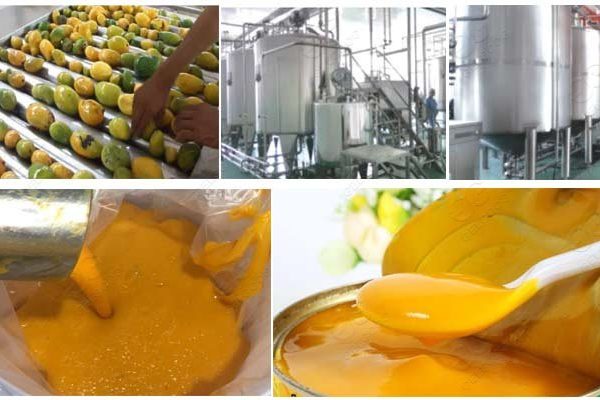Project Report For Mango Pulp Processing Plant
Introduction
Project report for Mango Pulp Processing Plant is as follows.
A mango pulp processing factory is a specialised facility that converts fresh mangoes into pulp, a thick, smooth semi-liquid substance. The goal of such a facility is to extract mango pulp and prepare it for usage in the food and beverage industries. To assure the creation of high-quality mango pulp, the process includes various phases and equipment.
The initial stage in the production of mango pulp is the careful selection of ripe and high-quality mangoes. Mangoes are cleaned and sorted in order to remove any damaged or unripe fruits. Mangoes are peeled and deseeded after sorting. Various approaches, such as hand extraction or the use of mechanical pulping devices, may be used in the pulp extraction process.
After the pulp is removed, it is processed to eliminate any undesired fibres, skin particles, or contaminants. This is often accomplished by a process known as refining or sieving, in which the pulp is passed through screens or filters.
The refined mango pulp is then heat-treated or pasteurised to assure its safety and extend its shelf life. Pasteurisation entails heating the pulp to a specified temperature for a set period of time in order to kill any hazardous microbes while keeping its quality. During pasteurisation, mango pulp is often packed in aseptic bags, cans, or bottles to retain freshness and avoid contamination. To assure product integrity, automated filling and sealing devices are used in a clean environment.
Mango pulp from these processing factories may be utilised as a basis component in a variety of food and beverage items, including juices, nectars, ice creams, yoghurts, jams, and jellies. It also has the potential to be exported to other nations for additional processing or direct consumption.
To ensure the quality and safety of the finished product, a mango pulp manufacturing factory requires a regulated and hygienic environment. It also need competent labour, quality control methods, and adherence to food safety norms and laws. Additionally, the facility may feature storage, refrigeration, and transportation facilities to guarantee that the pulp is delivered to clients in the best possible condition.

Process Of Mango Pulp Processing
Sorting and Washing: Ripe and high-quality mangoes are picked and sorted to eliminate any damaged or unripe fruits. After that, the mangoes are carefully cleaned to eliminate dirt and pollutants.
Peeling and Deseeding: The washed mangoes are peeled either manually or with specialised peeling equipment. The mangoes are next peeled and deseeded to remove the huge centre seed or stone. This process can be completed mechanically or manually with the use of knives or cutters.
Pulp Extraction: The pulp is extracted from the peeled and deseeded mangoes. There are several techniques for extracting pulp, including mechanical pulping equipment and manual methods like squeezing or crushing the fruit. The pulp that has been removed is collected in containers or tanks.
Refining and Sieving: Mango pulp collected may contain fibres, skin particles, or other contaminants. The pulp is refined by passing it through screens or filters to eliminate these undesired constituents. This phase aids in the creation of a smooth and uniform texture for the pulp.
Heat Treatment/Pasteurization: After refinement, the mango pulp is heat-treated or pasteurised. Pasteurisation is the process of heating the pulp to a specified temperature for a set period of time in order to destroy any hazardous bacteria while maintaining the product’s quality. This procedure protects the pulp’s safety and extends its shelf life.
Packaging: Mango pulp is packed in aseptic bags, cans, or bottles after pasteurisation to retain freshness and avoid contamination. In a sanitary setting, automated filling and sealing devices are employed for packaging. The packages are properly labelled and coded.
Market Potential Of Mango Pulp Processing
The mango pulp market is predicted to develop at a 7.3% CAGR. The market value is expected to rise from $1,493.2 million in 2022 to $3,020.75 million in 2032.
In addition to the expanding demand for mango-based goods globally, the market potential for a mango pulp processing factory in 2023 is enormous. Mango pulp is a versatile component that may be found in a variety of food and beverage items such as juices, nectars, ice cream, yoghurt, jams, and jellies. It has a distinct tropical flavour and is well-known for its nutritional properties.
In recent years, the global market for mango pulp has grown, owing to reasons such as rising consumer awareness of healthy and natural food options, the appeal of unusual flavours, and the growing trend of convenience meals. Mango pulp is in great demand in areas where fresh mangoes are not easily accessible all year.
Project Report Sample On Mango Pulp Processing Plant
Need Help?
Create 100% Bankable Project Report

